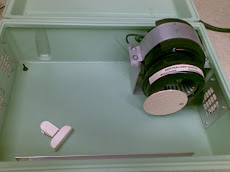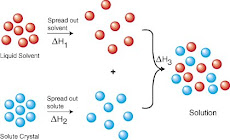7 times a day, low cholesterol diet
Main principles:
1- do not mix carbohydrates (Flour, bread, pasta) with proteins (meet, chicken, eggs, fish)
2- no sugar, only natural from fruit and vegetables (splenda or equal allowed)
3- eat seven times a day but reduced quantities
4- all cooking and salads with olive oil
5- Drink Water when hungry between food brakes.
Select one from each alternative given on each eating break
Waking up:
1- Glass of water
2- Coffee, tea
3- Orange juice
Breakfast:
1- two slices of integral bread (whole wheat, oats, etc) with marmalade,( no butter)
orange juice and/or coffee, tea
2- One banana or papaya or melon slice, with natural juice and crackers with low fat white cheese
3- Cereal bowl, shredded wheat, corn, rice or other with no sugar,2% fat milk. (Can add fruit). Best add honey. Coffee,tea
4- Omelets with vegetables but using only egg’s whites and white rice or integral bread.
10.30 am break:
1- Cereal bar or protein bar with juice or water
1- Coffee no sugar but splenda or equal integral crackers, water
2- Yogurt low fat, water
3- Banana or apple, water
4- 2 Boiled egg only white
5- Turkey breast sandwich with integral bread
Lunch:
1- Fish fillets (oven or fried in olive oil) with any type of vegetable salad or steamed vegetables. Rice is allowed.
2- Chicken breast with any salad or steamed vegetables. Rice is allowed
3- Turkey roasted or oven cooked with any salad or steamed vegetables, Rice
4- Stewed meet cubes with vegetables and salad. Rice allowed
5- Beef steak on grill or fried with olive oil and rice. Vegetables and salad.
6- Vegetable soup or chicken broth. Roasted chicken or turkey or rabbit. Rice allowed
7- Pasta with tomato or garlic or vegetable sauce, No meet.
3.30 pm Break:
1- yogurt with integral crackers
2- Cereal bar with water
3- Fruit and water
4- Integral bread and honey
5- Integral cracker and low fat white cheese
6- Fruit juice and integral cracker
Dinner:
1- Tuna fish (a can or natural if available) with salad
2- Salad with feta cheese and integral crackers
3- Whole grain cereal with low fat milk and honey
4- Vegetables with boiled eggs whites
5- One low fat ice cream
6- Potato puree no butter one portion, with salad
7- Steamed vegetables with low fat white cheese
8- Fruit and cereals no sugar, low fat milk.
Before bed:
1- Manzanilla, tilo tea or green tea no sugar or with honey
2- One low fat pop corn
3- Low fat ice cream
4- Yogurt
5- Glass of low fat milk
6- Carrot or papaya or melon
In bed:
1- Glass of water
2- Manzanilla tea, no sugar
EAMG606060
miércoles, 7 de abril de 2010
THE CHEMISTRY OF GOOD DIETS
Suscribirse a:
Entradas (Atom)
Vistas de página en total
GREEN CHEMICALS
The Green Seal certification is granted by the organization with that name and has a great number of members contributing with the requirements to pass a raw material or a chemical product as "green". Generally for a material to be green, has to comply with a series of characteristics like: near neutral pH, low volatility, non combustible, non toxic to aquatic life, be biodegradable as measured by oxygen demand in accordance with the OECD definition.
Also the materials have to meet with toxicity and health requirements regarding inhalation, dermal and eye contact. There is also a specific list of materials that are prohibited or restricted from formulations, like ozone-depleting compounds and alkylphenol ethoxylates amongst others. Please go to http://www.greenseal.com/ for complete information on their requirements.
For information on current issues regarding green chemicals, see the blog from the Journalist Doris De Guzman, in the ICIS at: http://www.icis.com/blogs/green-chemicals/.
Certification is an important — and confusing — aspect of green cleaning. Third-party certification is available for products that meet standards set by Green Seal, EcoLogo, Energy Star, the Carpet & Rug Institute and others.
Manufacturers can also hire independent labs to determine whether a product is environmentally preferable and then place the manufacturer’s own eco-logo on the product; this is called self-certification. Finally, some manufacturers label a product with words like “sustainable,” “green,” or “earth friendly” without any third-party verification.
“The fact that there is not a single authoritative standard to go by adds to the confusion,” says Steven L. Mack M.Ed., director of buildings and grounds service for Ohio University, Athens, Ohio.
In www.happi.com of June 2008 edition, there is a report of Natural formulating markets that also emphasises the fact that registration of "green formulas" is very confused at present, due to lack of direction and unification of criteria and that some governmental instittion (in my opinion the EPA) should take part in this very important issue.
Also the materials have to meet with toxicity and health requirements regarding inhalation, dermal and eye contact. There is also a specific list of materials that are prohibited or restricted from formulations, like ozone-depleting compounds and alkylphenol ethoxylates amongst others. Please go to http://www.greenseal.com/ for complete information on their requirements.
For information on current issues regarding green chemicals, see the blog from the Journalist Doris De Guzman, in the ICIS at: http://www.icis.com/blogs/green-chemicals/.
Certification is an important — and confusing — aspect of green cleaning. Third-party certification is available for products that meet standards set by Green Seal, EcoLogo, Energy Star, the Carpet & Rug Institute and others.
Manufacturers can also hire independent labs to determine whether a product is environmentally preferable and then place the manufacturer’s own eco-logo on the product; this is called self-certification. Finally, some manufacturers label a product with words like “sustainable,” “green,” or “earth friendly” without any third-party verification.
“The fact that there is not a single authoritative standard to go by adds to the confusion,” says Steven L. Mack M.Ed., director of buildings and grounds service for Ohio University, Athens, Ohio.
In www.happi.com of June 2008 edition, there is a report of Natural formulating markets that also emphasises the fact that registration of "green formulas" is very confused at present, due to lack of direction and unification of criteria and that some governmental instittion (in my opinion the EPA) should take part in this very important issue.










































